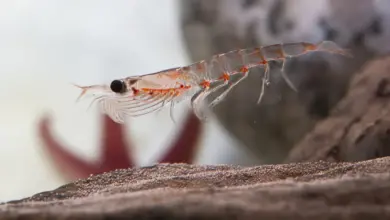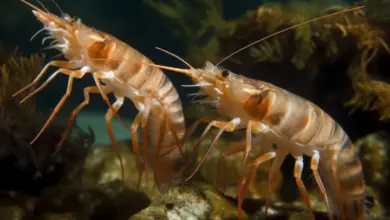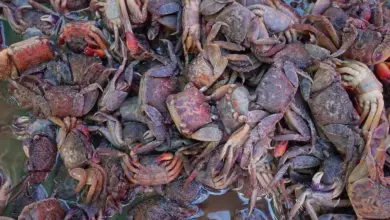What Eats Lobsters?
What Eats Lobsters? What Do Lobsters Eat?
The American lobster inhabits the rocky bottoms of the northwest Atlantic, from the frigid waters of Newfoundland down to the Carolinas. They thrive in depths from just a few feet near shore to over 700 feet offshore. Lobsters grow continually by shedding their exoskeletons when they become too small. They can reach sizes over 40 pounds and 3 feet long from the tip of the claw to the tail.
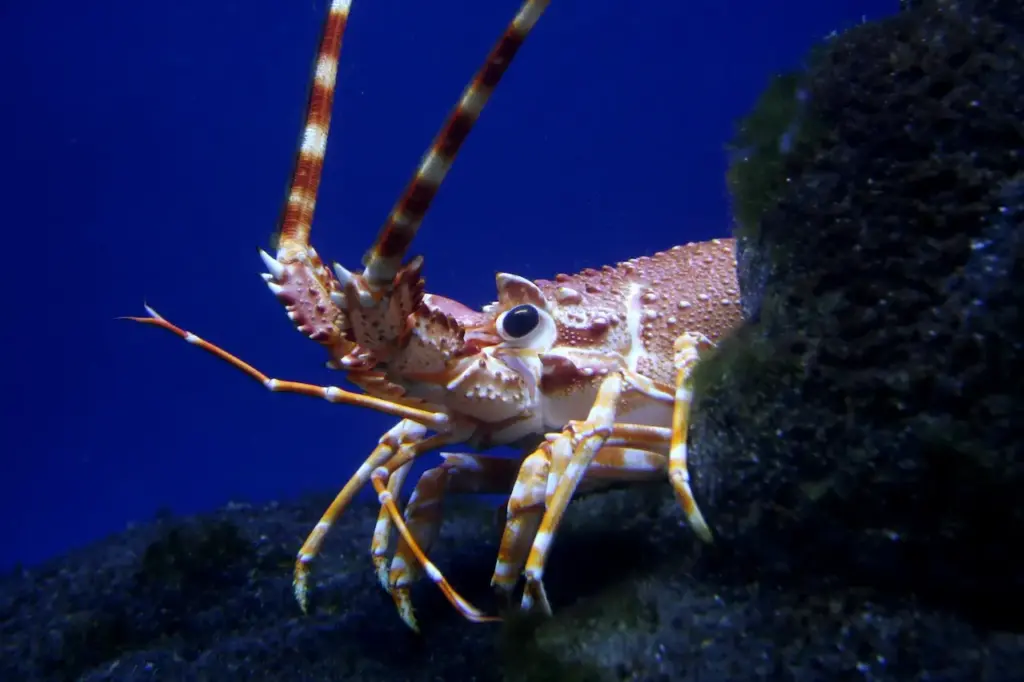
Their rich red color results from carotenoid pigments in their diet of mussels, snails, fish, and algae. Lobsters are generally nocturnal, hiding in crevices and under rocks during the day to avoid predators. At night, they emerge to hunt and forage. But nothing is assured for these armor-plated crustaceans. Several cunning predators have evolved methods to crack their defenses.
Large Bottom-Dwelling Fish
Multiple fish species share the rocky seabed home of the lobster. Over time, they’ve adapted specialized features to take advantage of this abundant food source.
Atlantic Cod
The Atlantic cod is a primary lobster predator, reaching its lengths of over 5 feet and 100 pounds. Cods prowl rocky lobster habitats during the day and night, seeking their prey. They use excellent vision and smell to zero in on lobster locations. Cods have bands of small, comb-like teeth in their mouths, perfect for gripping lobster shells.
Powerful jaw muscles allow them to crush the hard exoskeleton between their teeth, though larger lobsters may require repeated chewing and head shaking to break through. Once the shell is compromised, the cod can easily extract the flesh.
Monkfish
The cryptic monkfish conceals itself on the seafloor, camouflaging its body with sediment and algae. It waits patiently for prey to approach the lure-like dangly projection on its head which it can wiggle to attract attention. Hidden beside a rock or ledge, the monkfish detects lobsters approaching through vibration and chemical sensors on its lure.
When the lobster is within just a couple of feet, the monkfish opens its cavernous mouth lined with long, fang-like teeth and inhales with tremendous suction. The lobster gets sucked into the monkfish’s mouth and swallowed down its expandable throat whole. Even lobsters over 3 feet long can be consumed thanks to the monkfish’s huge head and mouth.
Wolf Fish
The eel-shaped wolffish prowls the nighttime lobster depths, guided by its excellent sense of smell to hunt. Its mouth contains bands of molar-like teeth specialized for crushing and grinding prey.
Wolf fish pick up the scent trails left by lobsters moving through cracks and crevices. They stealthily track the lobster to its resting spot and then attack suddenly, crushing down with their powerful jaws to break the shell. Their strong teeth and jaws make short work of ripping lobsters apart.
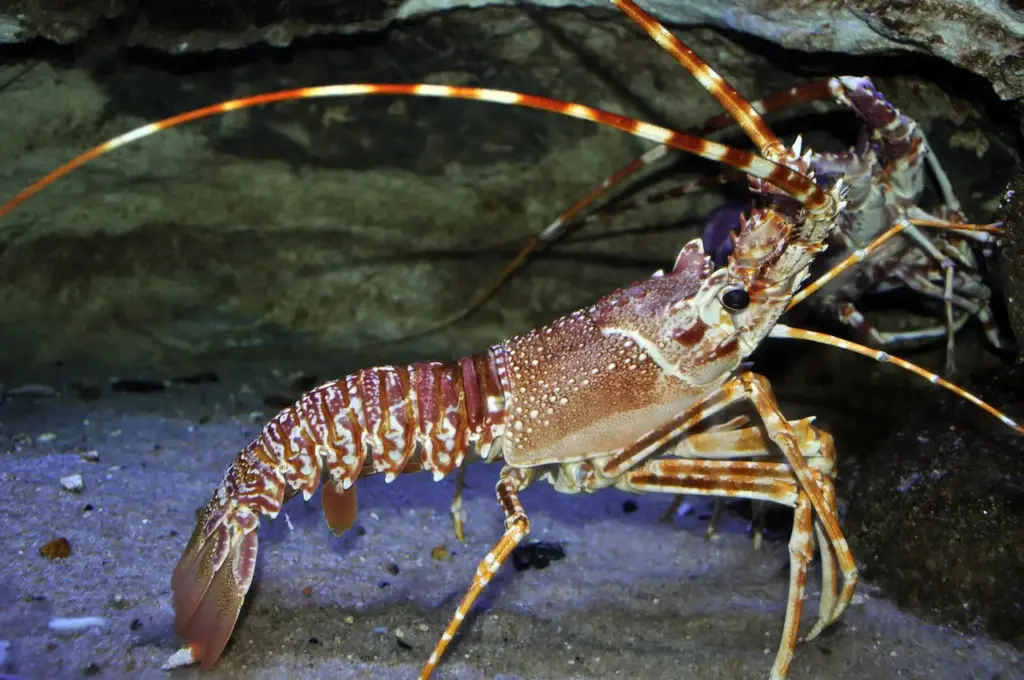
Sharks and Rays
Several shark and ray species that share coastal feeding grounds with lobsters will eat them when encountered. These predators employ unique tactics to consume their hard-shelled prey.
Thresher Sharks
The thresher shark uses its elongated, whiplike tail to stun and disable schooling fish. This same technique is equally effective on lobsters unlucky enough to be in the area. The shark circles its tail over a lobster with pinpoint accuracy.
The heavy tail delivers a pulverizing blow, either killing the lobster immediately or rendering it incapacitated for an easy meal. Threshers then use their small, razor-sharp teeth to easily slice the lobster’s flesh into bite-size chunks for swallowing.
Mako Sharks
The speedy shortfin mako inhabits shallow coastal waters where lobsters are often found. Makos rocket towards unwary lobsters head-on at speeds over 40 mph. They collide with lobster prey mouth open wide, clamping down with rows of sharp, triangular teeth to pierce the shell.
Their jaws deliver a force of over 3,000 pounds per square inch, enough to crack lobster shells with repeated bites and shakes. Lobsters often show evidence of healed-over mako bite wounds on their shells.
Stingrays
Several species of stingrays lie camouflaged on the seafloor, almost entirely buried in sediment with just their eyes poking out. Lobsters and other prey wander by and trigger an electrical signal detected through gel-filled pores on the stingray’s underside.
In a flash, the ray uses suction to inhale the lobster into its mouth. Rows of tightly packed crushing teeth break the lobster’s shell into pieces for easier consumption. Stingrays can access meat even within the thickest parts of a lobster’s body cavity.
Crustaceans
Lobsters have heavily armored defenses, but their fellow crustaceans possess claws and pincers just as strong. Several crab and lobster species prey upon each other.
Crabs
Many crabs inhabit the rocky seafloor terrain favored by lobsters. Smaller spider crabs and rock crabs tackle juvenile lobsters. Their claws can quickly shear off legs and antennae and rupture the softer underside.
Larger king crabs and stone crabs take on adult lobsters, crushing even the thick tail and body. Their sheer numbers gave crabs an advantage, overwhelming lobsters competing for the same food sources and shelters.
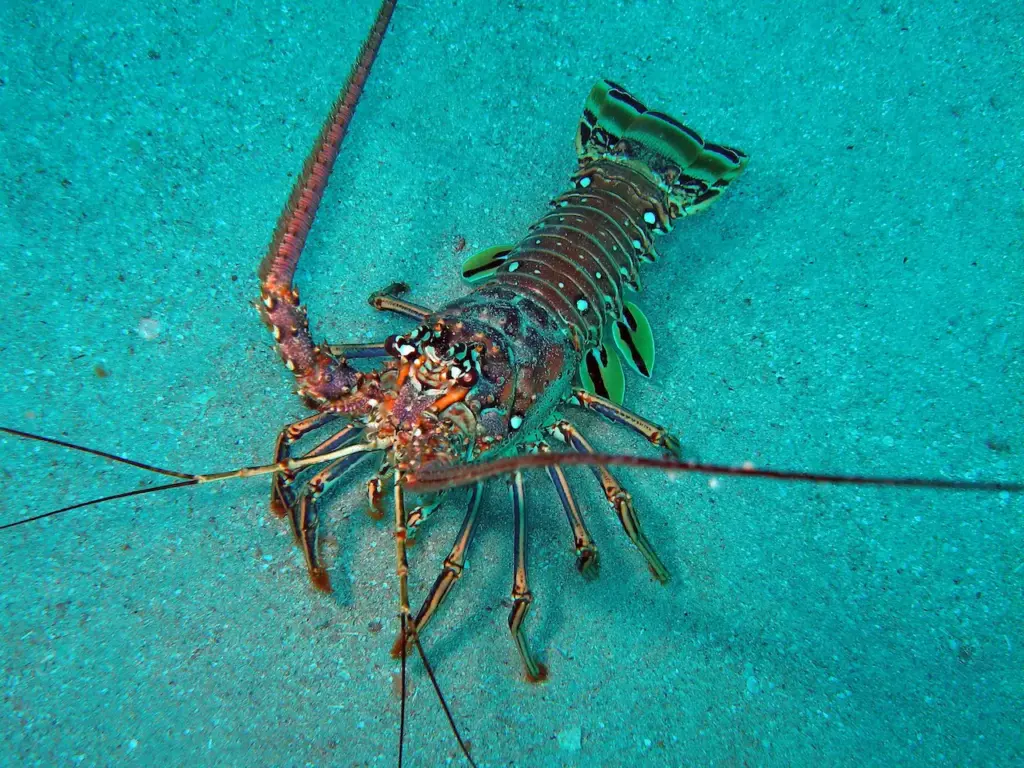
Larger Lobsters
Cannibalism is common among lobsters, with larger adults eating juveniles. Dominant male lobsters secure the safest hiding spots and best hunting grounds, forcing small females and juveniles to the fringes. Larger lobsters ambush and consume weaker ones for an easy meal. This intra-species predation helps control population size.
Norwegian Lobsters
Also called scampi or langoustine, these smaller clawless lobster relatives swarm over larger prey in packs. Working cooperatively, they surround a clawed lobster and attack using spiny legs like needles to puncture soft spots in the shell. They quickly devour inner flesh, leaving an emptied exoskeleton. Their small size allows them to scavenge every morsel of meat from a lobster’s chambered body.
Seabirds
Many coastal seabirds prey opportunistically on lobsters when foraging in shallow waters. Their sharp, spear-like beaks are effective tools for penetrating lobster defenses.
Cormorants
Cormorants dive from the surface at over 20 mph in pursuit of fish, eels, and crustaceans. They chase lobsters into rocky holes and crevices after them. Cormorants surface with smaller lobsters swallowed whole. Larger ones are carried to a coastal perch in the beak and bashed against rocks to crack them open.
Loons
Common loons and red-throated loons inhabit shallow coastal regions where lobsters thrive. Though ungainly on land, loons are masters of underwater pursuit. They use strong dagger-like beaks to impale chunks of flesh from lobster shells. Loons may work together to attack a large lobster from multiple angles.
Gulls
Gulls obtain lobsters in shallow intertidal areas and nearshore waters. They fly high above the ocean with a lobster in their beak, then drop it onto rocks to crack open the shell through blunt force trauma. Herring gulls and greater black-backed gulls use this technique to smash apart even the heaviest lobster armor.
Humans
Humans have significantly impacted lobster numbers more than any natural predator. Advanced commercial lobster fishing tools caused populations to nosedive before regulations were enacted.
While predators cull the sick and weak, human harvesting removes reproductive adults. Strict fishing limits help ensure lobster numbers remain sustainable. However, their future remains uncertain due to ongoing climate change and habitat degradation.
Conclusion
Lobsters contend with various natural predators in their environment, including bottom-dwelling fish, sharks, rays, seabirds, and fellow crustaceans. Fortunately, their high reproductive rates allow lobster populations to withstand predation pressure.
However, human exploitation poses the most serious threat to their continued survival. Only through sustainable fishing practices can this iconic crustacean continue thriving along the rocky shores of New England.

